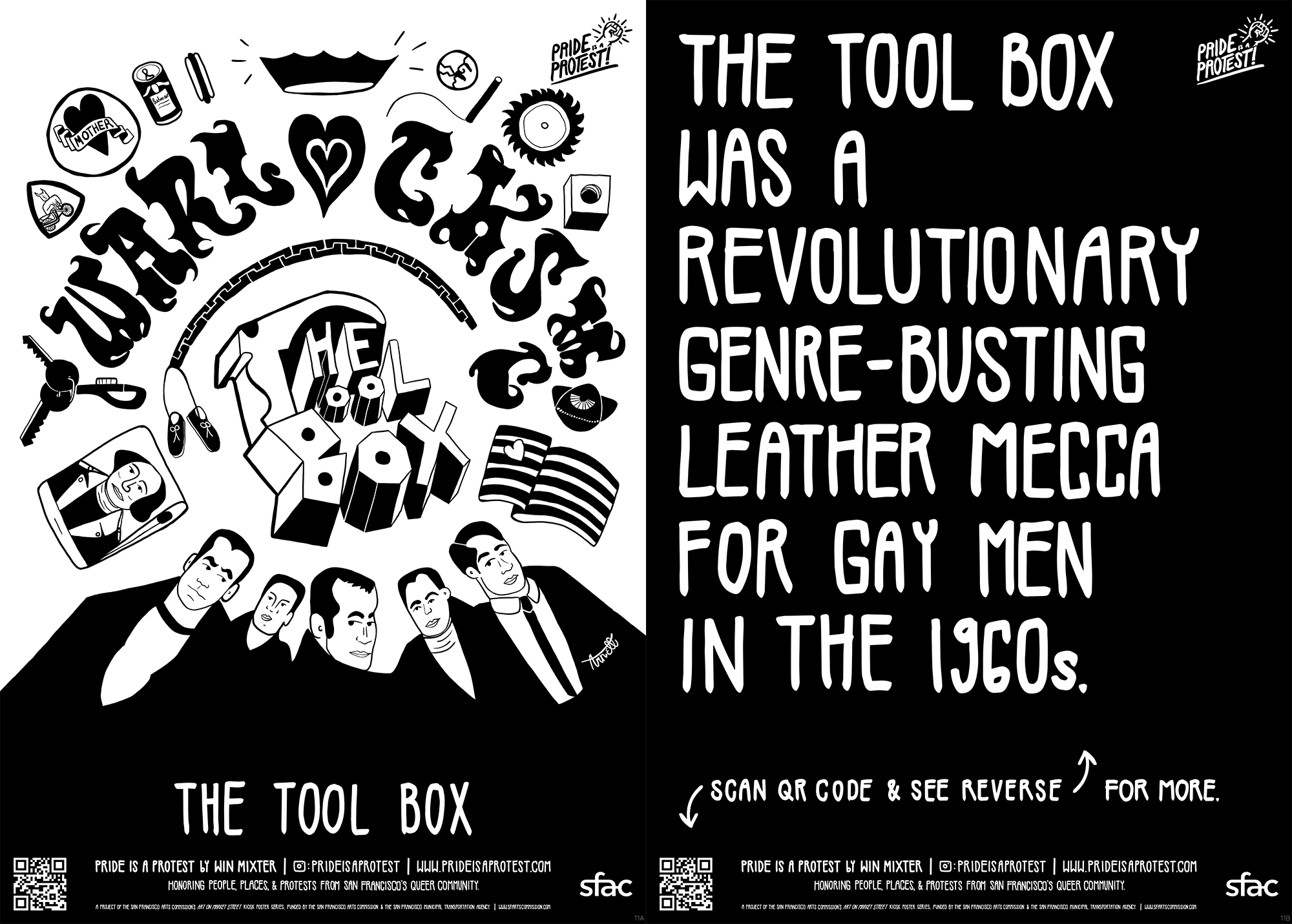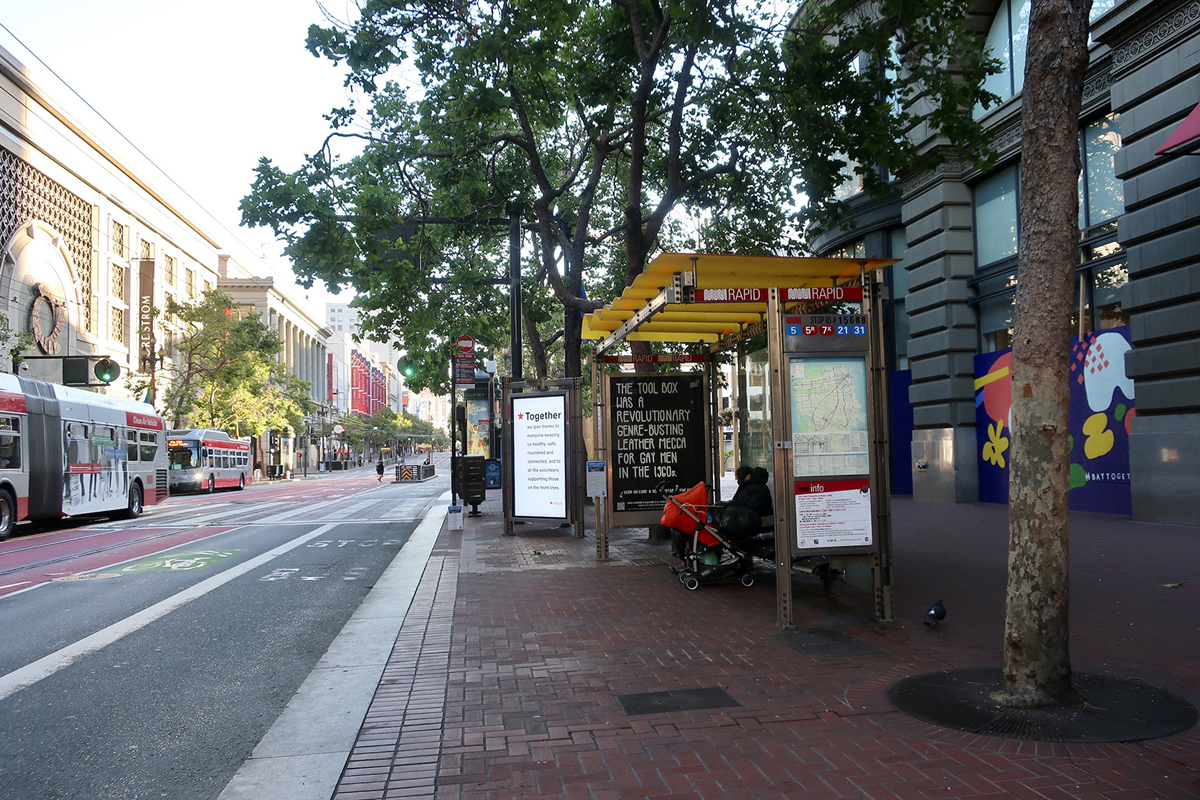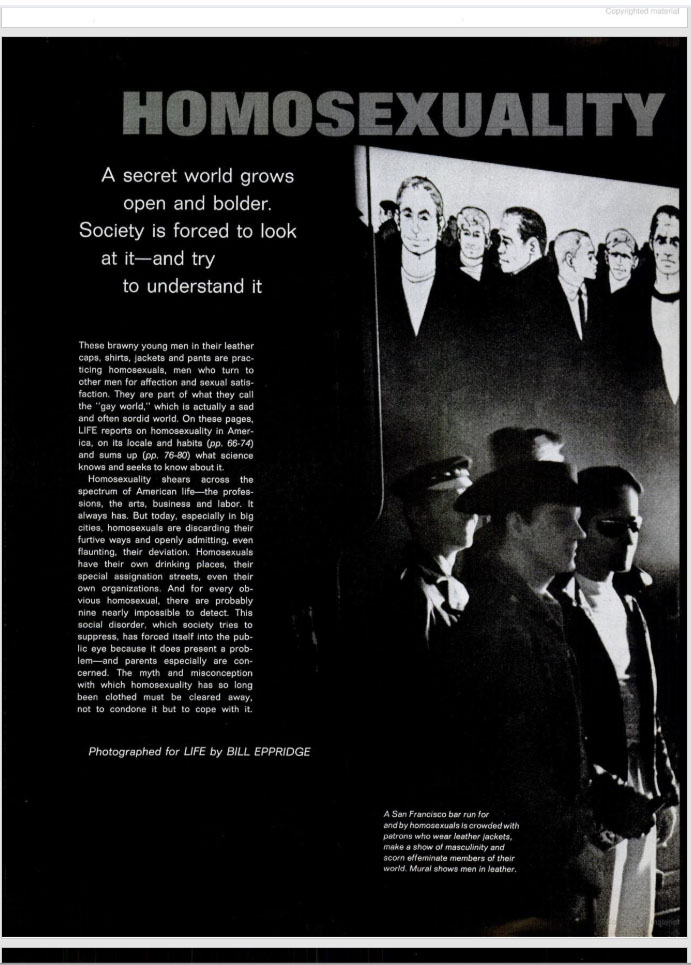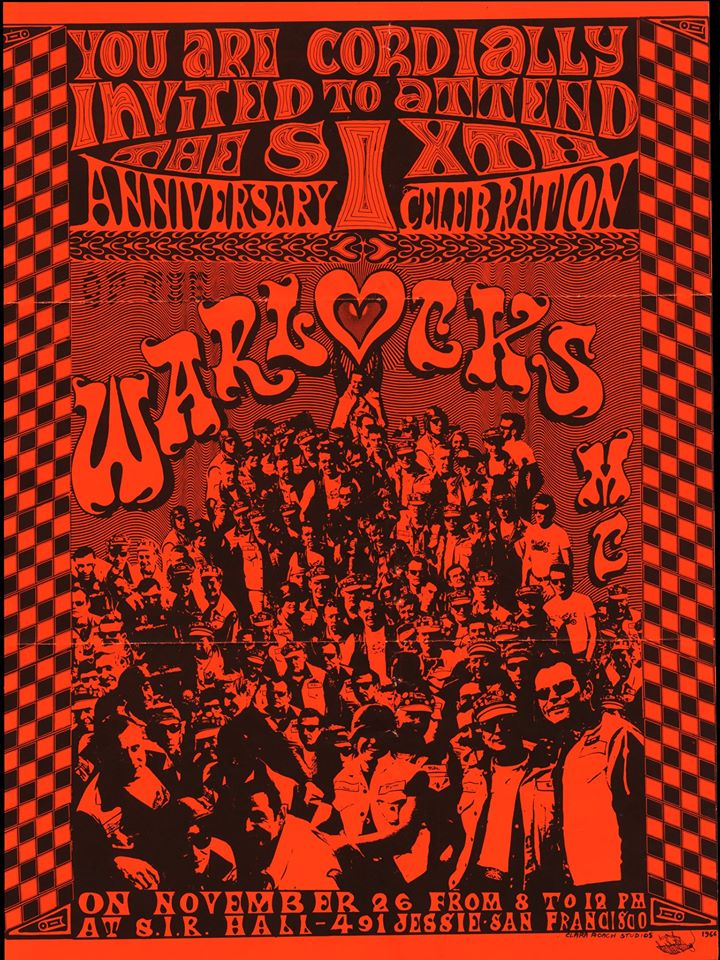Name:
The Tool Box
Dates:
1962–1971
Primary Resource:
Matthew Paul
2020 Poster Location:
Market/4th


The Tool Box was a legendary leather bar that helped establish SoMa’s reputation as the leather capital of the world. Opened in 1961, it featured a striking mural by artist and Tool Box bartender Chuck Arnett.
At the time of its debut, the bar was radical (and exclusionary) for its stance on masculinity; it aimed to debunk the myth that all gay men were effeminate. A pair of tennis shoes purportedly hung over the bar as a symbol of the fashion-conscious, swish gay man the bar’s clientele rejected.

According to renowned leather historian Gayle Rubin in her book The Miracle Mile: South of Market and Gay Male Leather, 1962-1997:
“The first dedicated leather bar in San Francisco was the Why Not, which opened briefly in the Tenderloin in 1962. When the Tool Box opened later that year on the corner of Fourth Street and Harrison, it was the first leather bar located in the South of Market. The Tool Box was a sensation... Herb Caen wrote about the Tool Box in his famous San Francisco Chronicle column:
"As I noted a few days ago, some of the young fellers who hang out in the Tool Box at Fourth and Harrison wear and S or an M on their shirt pockets to indicate Sadist or Masochist. Which prompted a relieved message from Harold Call. "I'm so glad you printed that," he said. "All this time I thought it meant Single, or Married!" (Caen 1964)
The most celebrated element of the Tool Box was a huge mural painted by Chuck Arnett, a local artist who worked at the bar and whose paintings and posters were also featured at such later bars as the Red Star Saloon and the Ambush... In 1964, when Life magazine did a story on homosexuality in America, a photograph of the Tool Box was spread across the two opening pages. (Welch & Eppridge 1964)
In it we see the mural and some of the bar patrons, including Arnett and several others who would play significant roles in San Francisco's early leather history, as the managers, bartenders, bouncers, and above all, the artists and decorators of local leather establishments.”

The Life article was mfirst mention of San Francisco as the “gay capital” of the United States. It was a radical act for the bar to allow a mainstream media photographer inside at a time when it was illegal to even touch someone of the same sex in an affectionate way in public. The article served as a siren’s call for gays across the nation to migrate west in order to finally be free to be themselves.
The bar was eventually torn down by the city for ‘urban renewal,’ though the wall featuring the mural stood vigil over the bar’s ruins for some two years before being further developed. A Whole Foods now stands where it once existed.
Images*









*FoundSF and The Satyrs Motorcycle Club, unless otherwise indicated.
Additional Resources
1) Homosexuality in America—Life Magazine article from June 24, 1964 that thrust the Tool Box and the gay leather scene in San Francisco into the national conversation.
2) The Satyrs Motorcycle Club Archives Collection—One of the clubs that patronized the bar; a collection of photos that give an idea of what a gay motorcycle club is like.
funded by the San Francisco Arts Commission and the San Francisco Municipal Transportation Agency.
www.sfartscommission.org.